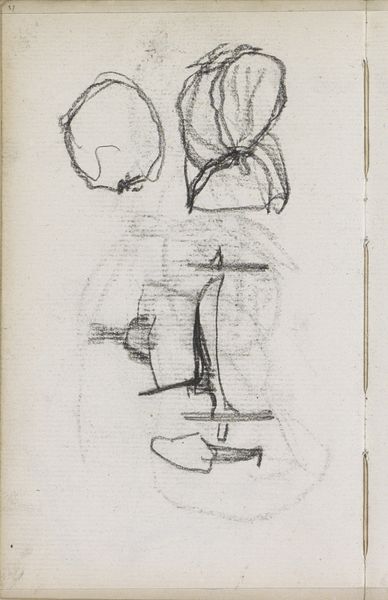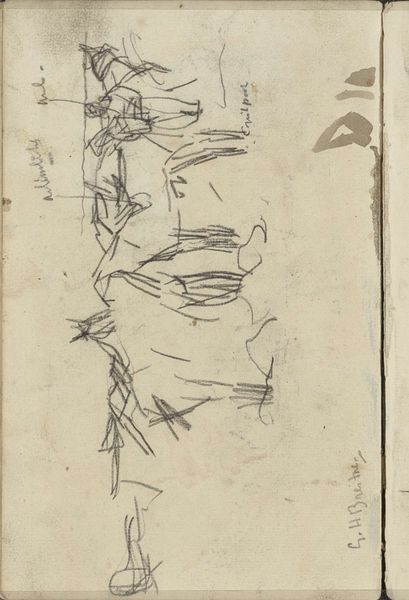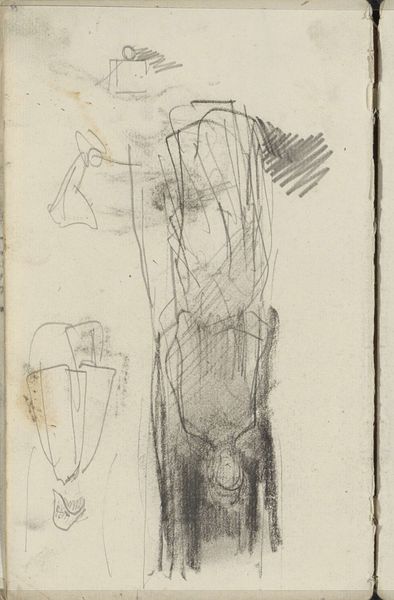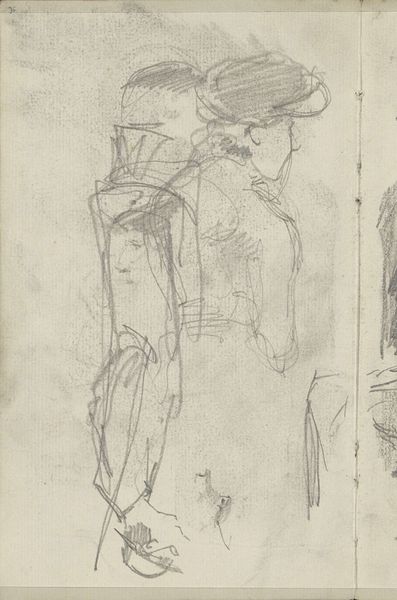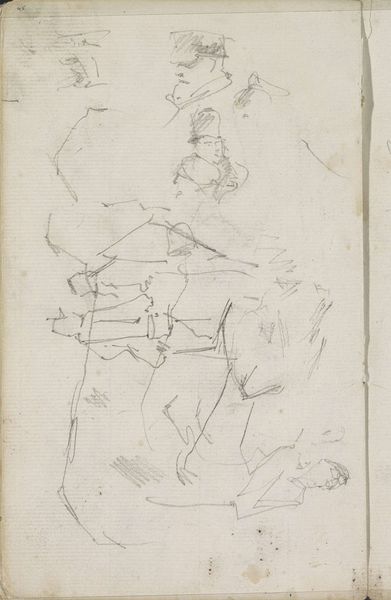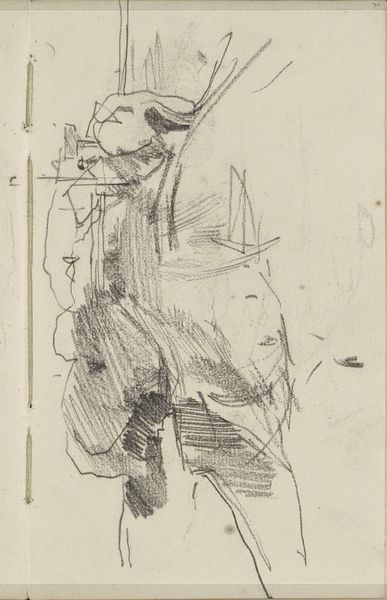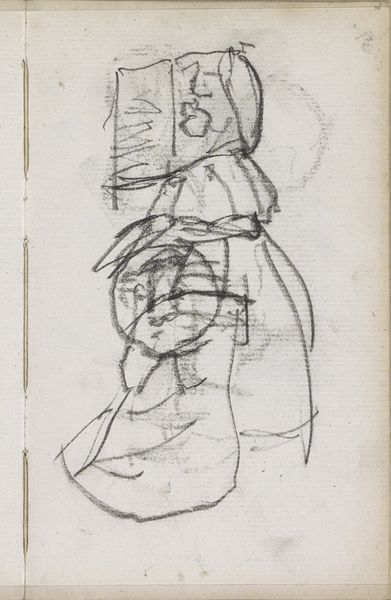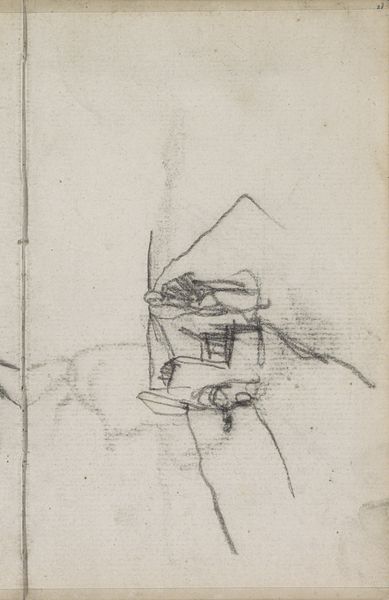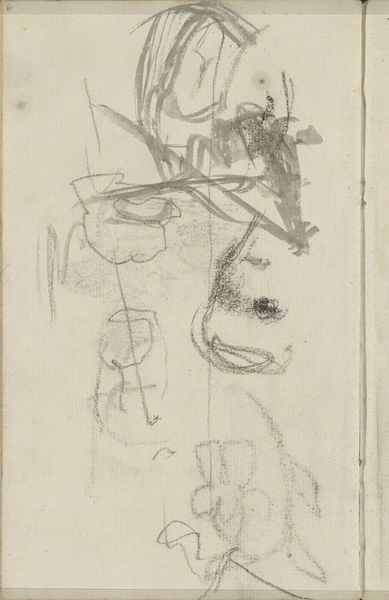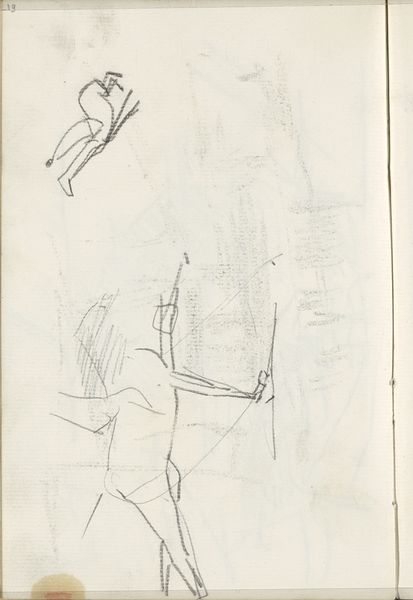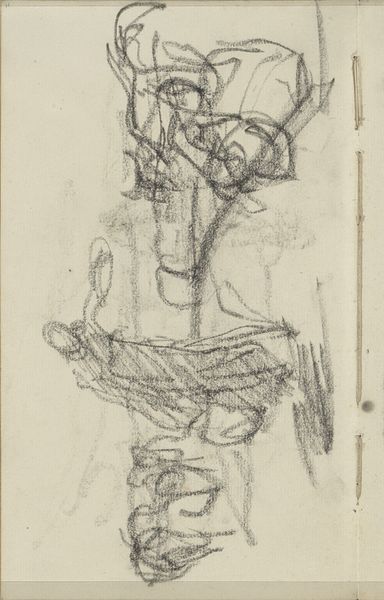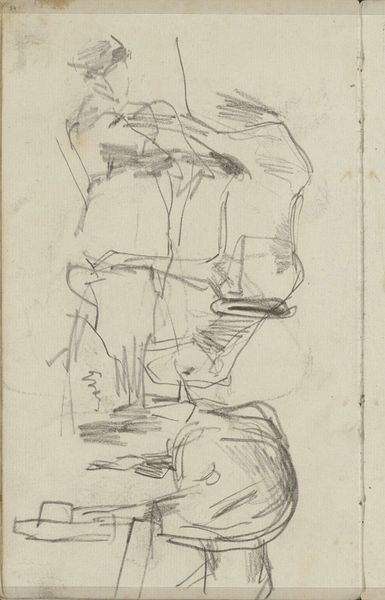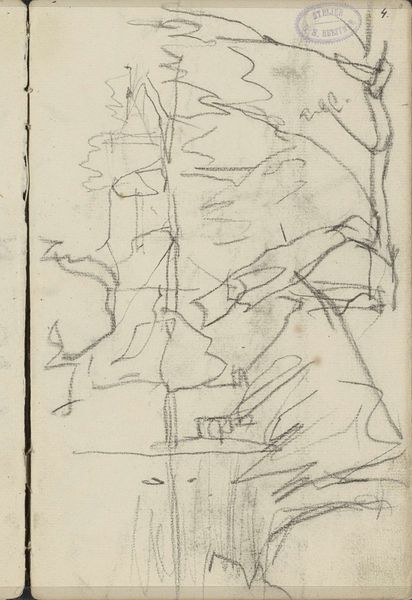
drawing, pencil, charcoal
#
drawing
#
impressionism
#
landscape
#
figuration
#
sketchwork
#
pencil
#
horse
#
sketchbook drawing
#
charcoal
Copyright: Rijks Museum: Open Domain
Editor: So, here we have George Hendrik Breitner's "Paarden en bomschuiten, mogelijk op het strand," created around 1880 to 1882, rendered in pencil and charcoal. It feels incredibly immediate, like a glimpse into the artist's process, but the sketch-like quality leaves much to the imagination. What's your perspective on how this kind of rapid capture relates to the period it was created in? Curator: Breitner’s choice of subject matter – horses and boats on the beach – connects to the social and economic importance of maritime industries in the Netherlands at this time. How do you see this sketchbook study interacting with the formal painting traditions of the time? Was it simply a preliminary step, or could it also serve a different cultural purpose? Editor: It's interesting to think about. Was it meant to capture the raw energy of working life as it happened? Curator: Exactly! And who had access to this scene and to artworks depicting it? Think about the rising middle class, hungry for depictions of contemporary life, especially labor. How do you see this drawing functioning within the art market and exhibition culture of the late 19th century? It could democratize depictions, in a sense. Editor: That makes sense. So, its accessibility, both in subject and in its sketched format, aligns with broader shifts in artistic patronage and the celebration of everyday life? Curator: Precisely. Breitner moved within circles known as the Amsterdam Impressionists, and was keen to show modern life from the perspectives of real and raw street views, avoiding the old academic ways. This would certainly find patronage with modern urban collectors. Editor: That contextual backdrop truly helps me understand the work’s relevance beyond its aesthetic qualities! Curator: Indeed, understanding the interplay of social forces and the art world is key. Editor: I appreciate that! Thanks to this conversation, I will have to look at how this approach may inform what else was occurring culturally during Breitner's era.
Comments
No comments
Be the first to comment and join the conversation on the ultimate creative platform.

